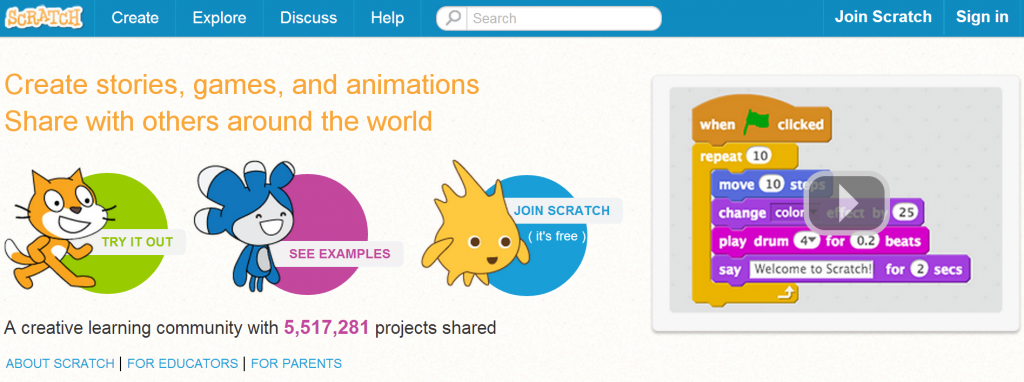By Anna Nahmias, Media Intern
The Scratch programing language is a great example of visual/code collaboration. Targeted towards the younger mind, Scratch lets users create projects from animations to video sensing with little-to-no coding. Collaboration with Scratch doesn’t stop at design and code; it’s also collaboration with the creators, the Lifelong Kindergarten Group at the MIT Media Lab, and its users, like you and me. It’s people building off of each other’s knowledge and experience.
The interface has bright colors and building-block-coding. As mentioned on the Scratch about page, “Scratch helps young people learn to think creatively, reason systematically, and work collaboratively”1. It would be amazing to see this software in middle school classes, perhaps a digital media or animation class. Then the student gets to decide what they want to focus on when considering colleges or even just a hobby.
Kids are smart. If you give them the tools they’ll figure it out. Maybe it’s the lack of pollution in both their minds and life. I suppose this idea could apply to us adults as well, if you give us the tools we’ll build it.
A quote from a Scratch user, “My 8-year-old brother and I have been active participants of the Scratch Online Community for over a year. I enjoy designing and programming games and animations with other kids, because different people have different skills, and when you work together, you can build a much better project than you can alone”2.
Collaboration is key; you can only accomplish so much yourself.




